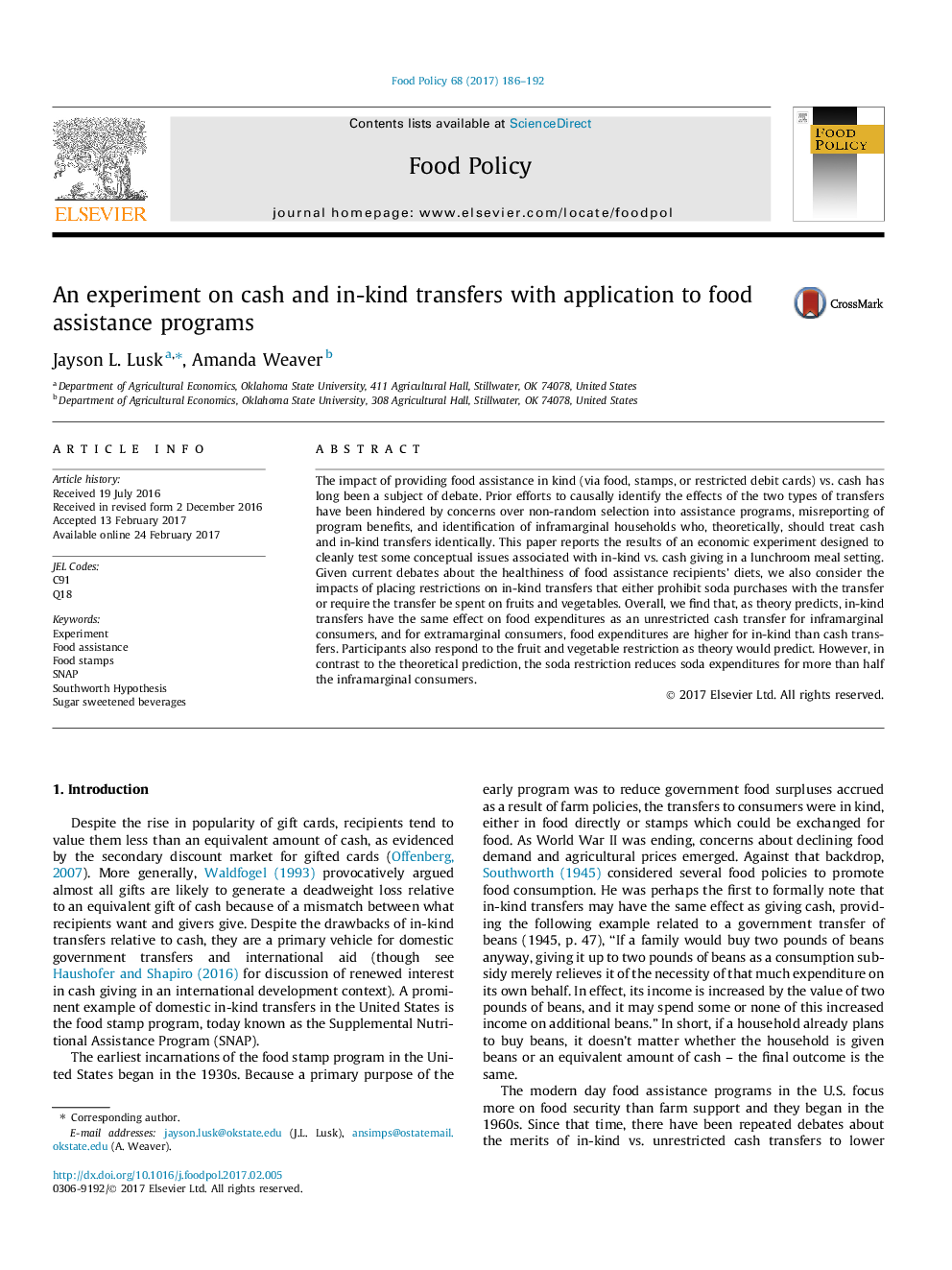| Article ID | Journal | Published Year | Pages | File Type |
|---|---|---|---|---|
| 5070176 | Food Policy | 2017 | 7 Pages |
â¢In-kind food and cash transfers should have the same effects for inframarginal consumers.â¢Results show spending is the same with in-kind food and cash transfers.â¢Banning SNAP purchases of soda should have no effect for inframarginal consumers.â¢Results show restrictions on in-kind transfers lowered soda consumption.â¢Responses to in-kind transfers promoting fruit and vegetable consumption were as expected.
The impact of providing food assistance in kind (via food, stamps, or restricted debit cards) vs. cash has long been a subject of debate. Prior efforts to causally identify the effects of the two types of transfers have been hindered by concerns over non-random selection into assistance programs, misreporting of program benefits, and identification of inframarginal households who, theoretically, should treat cash and in-kind transfers identically. This paper reports the results of an economic experiment designed to cleanly test some conceptual issues associated with in-kind vs. cash giving in a lunchroom meal setting. Given current debates about the healthiness of food assistance recipients' diets, we also consider the impacts of placing restrictions on in-kind transfers that either prohibit soda purchases with the transfer or require the transfer be spent on fruits and vegetables. Overall, we find that, as theory predicts, in-kind transfers have the same effect on food expenditures as an unrestricted cash transfer for inframarginal consumers, and for extramarginal consumers, food expenditures are higher for in-kind than cash transfers. Participants also respond to the fruit and vegetable restriction as theory would predict. However, in contrast to the theoretical prediction, the soda restriction reduces soda expenditures for more than half the inframarginal consumers.
